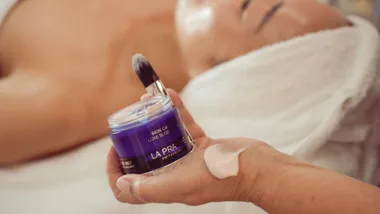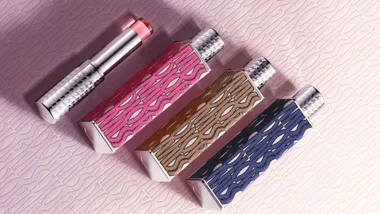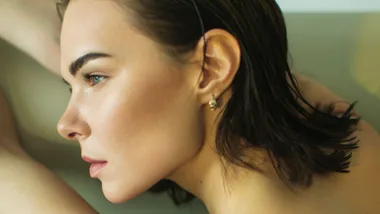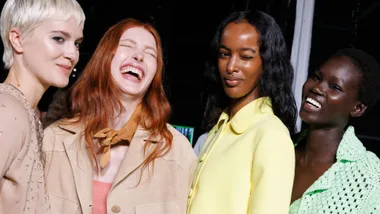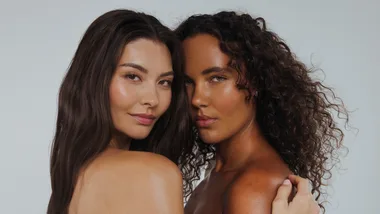How would you rate your relationship with your skin? Do you just let it do its thing without a second thought, or are you borderline obsessed with making it glow and always want to know everything and anything about the latest skin care products, breakthrough ingredients and new technologies? For those in the latter group, have you ever considered taking your skin care hobby and turning it into your full-time profession? If you’ve ever wondered about how to become a dermatologist, read on. We’ve got both the facts and a first-hand experience to help you determine whether or not this is the career path for you.
Studying to become a dermatologist
How do you become a dermatologist?
The Australasian College of Dermatologists (ACD) is the only organisation accredited to train individuals wanting to become specialist dermatologists in Australia. You need to undertake the ACD’s four-year degree to become a dermatologist.
What does a dermatologist do?
A dermatologist is a specialist doctor who diagnoses and treats skin diseases that affect the skin, hair and nails. According to the ACD, Australian dermatologists spend a lot of time treating diseases caused by sun exposure. Other typical skin consultations include acne, psoriasis, atopic eczema, skin infections such as warts, mole surveillance, melasma and occupational dermatitis.
What are the requirements to study dermatology in Australia?
Unfortunately, you can’t just waltz out of high school and walk into a dermatology degree. You first need a medical degree before you can study to specialise in dermatology. “There are two ways to become a dermatologist in Australia,” says a spokesperson from ACD, noting that you either need to be a local medical graduate or an overseas-trained dermatologist.
“Dermatologists are initially trained as doctors, undertaking six or more years of university study to gain their medical degree. For locally trained medical graduates, they must complete a university medical degree registerable in Australia, be a registered medical practitioner, and have a minimum of two years post-degree medical experience,” explains an ACD spokesperson.
As for dermatologists who have gained their medical qualifications in a country other than Australia, they must go through an assessment process by the ACD and may be required to undertake further upskilling. “The Medical Board of Australia requires that all international medical graduates apply directly to the ACD for assessment of their comparability to an Australian trained specialist.”
What degree does a dermatologist receive upon completion of their ACD course?
“The qualification is a certificate issued by the College and accredited by the Australian Medical Council. Further studies in various fields are also offered: Master of Dermatology, Graduate Certificate of Cosmetic Dermatology and a Mohs certificate. These are only available to Fellows of the College (medical practitioners who have successfully completed the ACD dermatology training program).”
How long does it take to complete the degree?
Becoming a dermatologist takes four years of full-time study. The ACD also has flexible training and trainees may be eligible for part-time study or take leave of absence. Trainees have a maximum of 10 years to complete training.
What is involved in dermatology training?
“Training is best described as an ‘apprenticeship model’,” says the College. “Trainees are employed by hospitals and undertake on-the-job training, including clinics and consultations under supervision of qualified dermatologists. Trainees rotate to different hospitals to ensure breadth and depth of training. They must undertake a series of work-based assessments and other assessments each year and in their final year they are required to complete an exit exam.”
What is the average salary of a dermatologist in Australia?
According to reports released by the Australian Taxation Office (ATO) in 2016, dermatologists are among the highest-paid jobs in Australia. However, the average salary varies greatly between men and women. The ATO noted that the average salary of a male dermatologist in Australia is $383,880, while female dermatologists earn $195,030 on average.
The life of a real dermatologist
Dr Natasha Cook is one of Australia’s leading dermatologists. She has a Bachelor of Medicine, Bachelor of Surgery with Honours and is a Certified Cosmetic and Surgical Dermatologist. She is a member of the Australasian College of Dermatology, American Academy of Dermatology and International Academy of Cosmetic Dermatology, and has her own clinic, Darlinghurst Dermatology Skin & Laser Clinic. She’s also launched her own skincare line, Dr Natasha Cook Cosmeceuticals.
We spoke to Dr Cook to find out her personal experience with becoming a dermatologist, plus the highs and lows of the job.
What was your career path towards becoming a dermatologist?
“In order to become a dermatologist, you first need to complete your medical degree. I studied and completed my undergraduate medical degree at the University of Sydney with honours.
You then need to complete a minimum of two years in the hospital system, rotating through a mixture of specialities to cement your undergraduate knowledge. I worked in Intensive Care, Anaesthetics, Emergency, Orthopaedic Surgery and Neurology. Once eligible, you sit entrance exams. These are some of the hardest exams I have ever had to study for. I think I must have read about 6000 pages of literature from dozens of international medical journals that were on the reading list. There were NO past papers.
We also had to cover head and neck anatomy as a dermatologist, and also do dermatologic surgery. Finally, immunology, as the skin is intimately linked with the immune system.
A pass mark was 85 out of 100! Only four people out of 45 passed in NSW when I sat. I was fortunate enough to be one of them.
Once you had passed this exam you were eligible to apply for a training position with the Australasian College of Dermatologists. These interviews were intense. Two rooms of eight people each asking you a question, testing your logical and rational thinking, your emotional intelligence and your morals and values.
I was fortunate to have gotten through both the exam and the interview first go! Ready for four years of committed and intense speciality training.
Each year was spent working at a different hospital as a Registrar (trainee specialist) in the dermatology department. My rotations were St Vincent’s Hospital Sydney, Liverpool Hospital, Westmead Hospital and Royal Prince Alfred Hospital.”
What’s your favourite thing about your job?
“That’s hard to answer as there are many aspects that I love about my job. I guess making a difference to an individual’s life. Whether it is saving a life by picking up a melanoma, fixing a chronic skin problem that GPs have not been able to manage, or clearing someone’s acne that they have suffered from for years and seeing their self-esteem start to flourish again.
I also love cosmetic dermatology and skin care formulating. I have sub-specialised in both. Playing with lasers and fillers and technology to fix skin and make it beautiful is very rewarding and feeds my creativity; whilst coming up with new formulations that are gaps in the skin care market based on my intensive clinical experience really gives me a buzz. Formulating is not for those who need instant gratification! It is a long pathway from an idea to getting a product to market that also actually works!”
What’s the hardest part about your job?
“People. Some patients can be very entitled and demanding. They can zap your energy source in an instant. You have to maintain professionalism at all times. After 20 patients in a morning, you can feel very depleted, especially if you get a difficult patient. Nowadays some people are a lot more entitled and impatient so it can make your job so much more difficult.
What’s one thing people may not know about dermatologists?
“The fact they are real medical doctors and how intensive and comprehensive our training is. It is one of the most difficult specialities. I often get asked can I write a script, lol!”
What’s the most common thing you get asked as a dermatologist?
“Mmmm I get asked SOOOOO much! Especially inappropriately when out and about socially. You suddenly become the go-to at a dinner or party. ‘Is this a melanoma’ as they point to a spot you can’t see in the dim light. ‘What anti-ageing cream can I use.’ ‘Is botox safe.’
Does your job involve more than just dermatology?
“I do surgery for skin cancers. I have done advanced training in Laser and Cosmetic Dermatology. I spend a lot of time in the US advancing my skills. [Unofficially] You are also a constant psychologist and therapist! The job is definitely more than skin deep. When people are stressed it often comes out in the skin and you end up having to work out what is going on in the patient’s entire life.”
Do you feel pressure to always have great skin?! What’s your secret?
“Mmmm well, yes. I believe in early intervention is prevention. Also, just stay out of the sun!
What you do at home is equally important as what you do in-clinic.
I use my range that I basically developed when I could not find appropriate clinical strength combinations of actives that I knew was needed based on my extensive reading and years of clinical experience. They also had to be easy to use and feel luxurious.
Dermatologic science is complex, BUT skin care doesn’t have to be! Hence my Concentrated Clinical Strength Cosmeceutical range. There are a handful of essential ingredients that skin needs to be even, blemish-free, radiant and ageless, let alone combat the harsh environment we have here in Australia. Did you know that Australian women’s skin is up to 15 years older than their northern hemisphere sisters due to our environment! Each product in my Dr Natasha Cook Cosmeceuticals range is curated to deliver these and give the skin what it needs in each step.”




